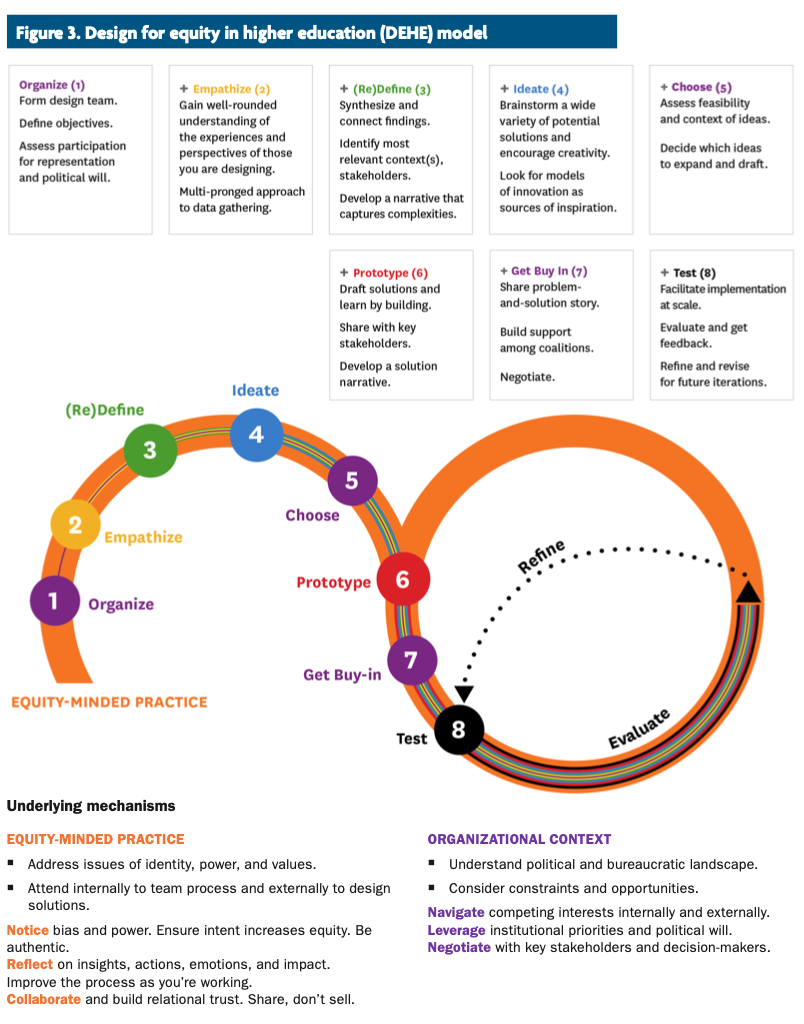You have /5 articles left.
Sign up for a free account or log in.

SurfUpVector/Getty Images
Two new sets of papers from the TIAA Institute emphasize the “volatility” of adjuncts’ employment, benefits and financial security, and how institutions need to think deliberately and creatively about how to better accommodate them.
‘Those Who Have Everything and Those Who Do Not’
The first study, led by Manuel S. González Canché, an associate professor of higher education at the University of Pennsylvania, finds that 60 percent of adjuncts employed at multiple institutions have participated in a retirement plan, even if they’re not currently contributing to it, compared to 46 percent of those employed at one institution. Forty-five percent of adjuncts employed at multiple institutions have employer-provided health insurance, compared to 27 percent of those employed at one institution. And 45 percent of adjuncts working at multiple institutions are concerned about their ability to retire, compared to 36 percent of those employed at one institution.
In a network analysis, the availability of faculty unions was consistently linked to “bringing more security to these volatile academic appointments,” the papers say.
Participants in the study expressed interest in the possibility of having matching benefits plans across all employing institutions. The papers compare this idea to “having or enacting a centralized savings system,” so that adjuncts don’t have to worry about changing plans when they move from an institution or work at more than one.
González Canché and his team interviewed 40 adjuncts on appointments of one year or less across a variety of institution types and locales. Twenty-nine of 40 participants were employed at more than one institution. More than half the sample had been working in colleges or universities for 10 years or more.
A subset of the sample said that adjunct teaching was not their primary source of income, sometimes because they had a full-time job outside academe. The papers ask institutions to think about this in crafting retirement plans for adjuncts, especially for those adjuncts who are “in actual need.”
Faculty holding adjunct appointments as their main source of income, meanwhile, tend to be unable to afford participation in retirement plans -- even when at least one of their employers offers matching contributions, González Canché and his colleagues found. For these adjuncts, the summer months -- what some call the “not teaching season” -- is a struggle. Many report having to save their teaching salary during the teaching months to cope with these nonteaching months.
As these professors “clearly already have a savings mentality and attitude,” the reports say, “their need to save money for the short term precludes their participation in longer-term savings plans.” One participant said, for instance, that “there is a 6 percent match retirement plan available to me” but the adjunct couldn’t afford to give that up due to relatively low pay.
Adjuncts said they sometimes view their appointments as “degrading because of differential treatment, such as lower matching retirement account contributions and salaries compared to those available to full-time faculty,” the studies say.
These interviews were conducted pre-COVID-19. The studies say that the “repercussions of the pandemic are yet to be observed, and the design of plans to serve this subset of population is perhaps needed now more than in past decades for the presence and prevalence of full-time adjunct faculty may increase as institutions face enrollment declines. Since these faculty are less costly, institutions may rely on their services even more.”
Ultimately, the papers say, “The long-term negative effects of temporary employment without seniority or retirement plans could be ameliorated with well-crafted plans designed to serve those most at need.”
González Canché said via email Tuesday that his papers look at not just adjuncts, but those with “absolutely no job security.”
“What truly bothered me was that most faculty members holding these volatile appointments and who are dedicated full-time to the academia are forgoing or forfeiting on their matching benefits due to lower salaries,” he said. “They said that while it would be financially helpful to participate in matching plans, which is ‘free money,’ they cannot afford let go X percent of their salaries.”
González Canché underscored the fact that some adjuncts in the study said they were not financially dependent on their volatile appointments, for various reasons. But other adjuncts were very much dependent, to the point that they couldn’t afford to “take advantage of a financial benefit they are entitled to,” he said.
“On a personal note, it was quite stressing, taxing and sad for me to conduct these analyses, for they once more reflect big gaps between those who have everything and those who do not.”
González Canché’s studies complement previous data on adjuncts and retirement from TIAA. A 2020 study, for instance, found that adjunct faculty members teaching even one course were eligible to contribute to a retirement savings plan offered at 83 percent of institutions and 75 percent of college and university systems. Almost all institutions and systems studied allowed some adjuncts to contribute as of 2019.
Adjuncts aren’t typically auto-enrolled in these savings plans, however, and just about 37 percent of institutions and 60 percent of systems match those savings, TIAA found. Certain course-load thresholds for matching often apply.
A 2015 survey from TIAA found that 82 percent of adjuncts were saving for retirement, either through a plan at work or on their own, but that many adjuncts reported anxiety about their pay being too low to defer salary into retirement savings or otherwise plan financially for the future.
Maria Maisto, president of the New Faculty Majority, an adjunct advocacy organization, said that retirement “is a huge concern to adjuncts and has been an underemphasized organizing issue.” Unionizing almost always helps, she continued, but structural issues such as the Social Security Administration’s Windfall Elimination Provision “adversely [affect] contingent faculty by penalizing them for accessing funds that they desperately need.”
All this is “a continuing reflection of how misinformed people are about the practical realities of contingent faculty employment practices,” Maisto said. “Systems like retirement and unemployment were not designed for contingent workers, as if contingent workers don’t have a need for them. That couldn’t be more wrong.”
Designing for Equity in Higher Education
A second set of papers released by the TIAA Institute Tuesday, led by researchers at the University of Southern California’s Pullias Center for Higher Education, argues that campus leaders can make policies and practices more equitable for non-tenure-track professors through what’s known as a “liberatory design” approach. Notice, empathize, define, ideate, prototype, test and reflect are key concepts within this approach. The papers say that liberatory design may more suited to higher education than to more hierarchical organizational structures, as designing thinking involves collaborative design teams made up of various stakeholders -- something like academe’s shared governance model.
Still, the papers’ authors, including Adrianna Kezar, Pullias’s director and a longtime advocate for adjuncts, revise the design model slightly for colleges and universities, as follows: organize, empathize, redefine, ideate, choose, prototype, buy-in and test. This new model, called Design for Equity in Higher Education, also incorporates equity mind-sets and noticing and reflecting throughout the design process (see below, from the TIAA reports).
 The papers include two design case studies, one from a community college, Harper College in Illinois, and one four-year regional institution, California State University at Dominguez Hills. Harper used design thinking starting in 2016 to design a professional development program for adjuncts, called the Level II Adjunct Faculty Engagement Program. The effort, prompted by a recent redesign of the faculty evaluation process to better promote faculty members’ professional development, was eventually written into the faculty contract. In particular, the TIAA report says, the Level II program became open to adjuncts who had taught for four consecutive semesters, and those who completed it earned a special designation, increased compensation, priority course assignment and a guaranteed phone interview for full-time faculty positions for which they are qualified.
The papers include two design case studies, one from a community college, Harper College in Illinois, and one four-year regional institution, California State University at Dominguez Hills. Harper used design thinking starting in 2016 to design a professional development program for adjuncts, called the Level II Adjunct Faculty Engagement Program. The effort, prompted by a recent redesign of the faculty evaluation process to better promote faculty members’ professional development, was eventually written into the faculty contract. In particular, the TIAA report says, the Level II program became open to adjuncts who had taught for four consecutive semesters, and those who completed it earned a special designation, increased compensation, priority course assignment and a guaranteed phone interview for full-time faculty positions for which they are qualified.
Dominguez Hills used design thinking starting in 2017, as student-to-faculty and non-tenure-track professor to tenure-track professor ratios both increased, to examine working conditions for lecturers, who are mostly part-time. The goal of a new task force was to identify ways to support lecturers by creating less stratified faculty policies and practices. Instead of choosing one or two initiatives to put forth, the report says, the task force created a comprehensive list of recommendations, figuring that the success of specific initiatives would require external buy-in. Dominguez Hills has since adopted a number of the policies, such as pay increases and multiyear contracts, and practices, such as involving lecturers in governance and making them eligible for teaching awards.
“Hiring diverse faculty, making learning more relevant and engaging for all learners, and creating more inclusive admissions policies are all important equity design issues that could benefit from the application of this process,” the TIAA papers say, urging campus leaders to develop special tools to guide their decision processes (Kezar, for the National Academy of Sciences, has previously written about how equity-mindedness can help institutions navigate the post-COVID-19 era). “Too often, ideas are borrowed from other sectors without the appropriate vetting and reconfiguring to appropriately work within higher education settings.”
KC Culver, a researcher at Pullias and one of Kezar’s co-authors, said Tuesday that the “gig academy isn’t going anywhere, especially with the increased financial instability caused by the pandemic, and so it’s crucial for campuses to engage in intentional work that helps adjuncts and lecturers thrive as professionals.” Having access to resources such as professional development, technology and library services is “necessary for non-tenure-track faculty to be effective instructors that support students’ learning and success,” she added.
Campuses are now planning for students to fully return to campus, Culver said, “but there have also been lots of shifts in the ways we work, communicate and teach,” providing “an unusual opportunity for campuses to really engage deeply in imagining and creating a more equitable and inclusive organization at all levels, including for students, faculty and staff.”









